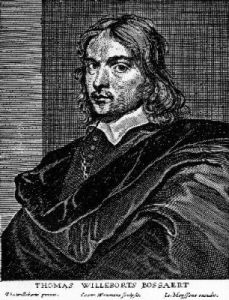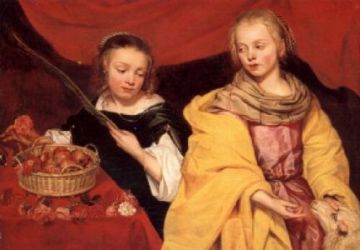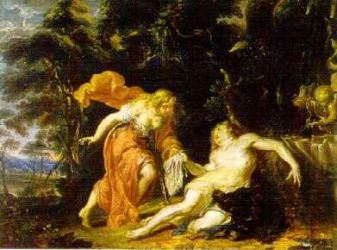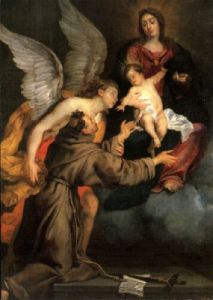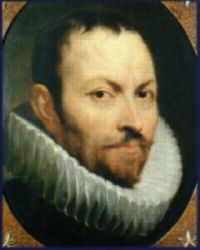|
|
Bosschaerts - Persyn Genealogical research - Known painters
|
Biography of Thomas Willebrordus Bosschaert (1613-1654)
Willebrord belonged to a later generation than Rubens, and had another style. He was most attracted with the elegant figurative language as it can be found on the paintings of Antoon Van Dyck. But Thomas became an independent creative painter, and he was able to develop the base of Van Dijck in other ways. Thomas Willebrordus was a famous painter. In 1629, he was the apprentice of the Antwerp painter Gerard Segers (1591-1651), and he specialized himself on large pictures and portraits. After his studies in Italy, England and Germany, he returned to Bergen op Zoom. He painted with great skill many altar pieces and portraits of sovereigns and considerable persons, and these works are very simular to the masterpieces of Anthoon Van Dijck. In 1636-37 Willeboirts was registered as an independent master by the Guild of St.-Luke in Antwerp, and on 7 August 1637 he obtained the civil rights of the city. In 1649 he was appointed as Director of the Academy in Antwerp. In the years 1650 Thomas Willeboirts reached his artistic peak years. He had a large amount of commisions and this period was his mostly productive. On 18 September 1650 he was chosen as Dean of the Guild of St.-Luke in Antwerp. He could live prosperous and was able to pay the high rent price of 625 guilders a year for the beautiful house ‘Den Bock' in the Florisstreet.
The church of Saint Willebrordus, outside Antwerp, possesses one of his paintings,
that was regarded a long time as a painting of Rubens. Also in the O.L.V. church
of Antwerp, at the altar of the brotherhood of St. Barbara, hangs an altar piece,
as a copy of Van Dyck. It depict a Christ crossing, surrounded with the H. Virgin,
the H. Franciscus and Magdalena.
|
This site powered by The Next Generation of Genealogy Sitebuilding v. 14.0, written by Darrin Lythgoe © 2001-2025. Maintained by Rudi Bosschaerts. Hosted at One.com © 2019 Rudi Bosschaerts, Belgium. |






